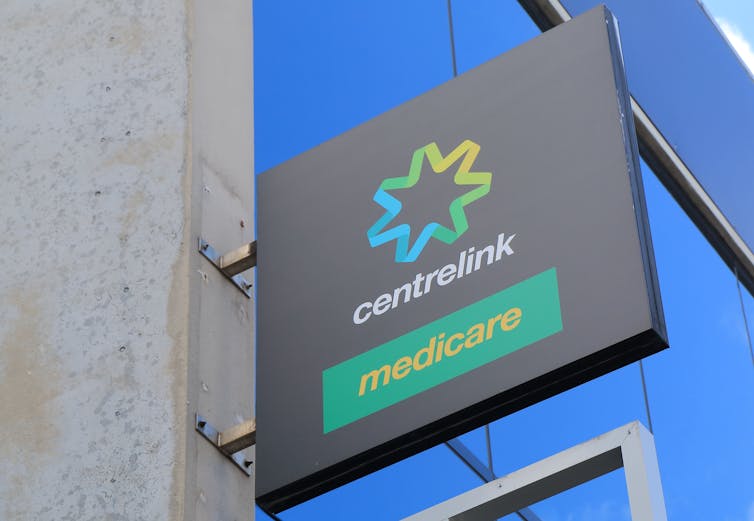Drugs don't affect job seeking, so let's offer users help rather than take away their payments
- Written by Nicole Lee, Professor at the National Drug Research Institute, Curtin University
The Morrison government is having another shot at getting its proposal to drug test people on welfare through the Senate.
Welfare, health and drug treatment experts have consistently opposed the proposal since it was first introduced three years ago. They say these measures will only serve to further marginalise people on welfare and people who use drugs, and may have a range of unintended consequences such as homelessness.
If the government really wanted to assist people who have drug problems to return to work, it would increase funding for drug treatment.
What’s being proposed?
The new proposal appears very similar to those the Senate previously rejected in 2017 and 2018.
A two year trial would test around 5,000 new recipients of Newstart Allowance and Youth Allowance for a range of illegal drugs in three locations in Queensland, New South Wales and Western Australia.
Read more: Drug testing welfare recipients raises questions about data profiling and discrimination
Cocaine has been added to the list of drugs to be tested for. The list already included methamphetamine, MDMA (ecstasy), opioids (such as heroin) and cannabis in earlier versions.
Welfare recipients who test positive will be placed on income management, with 80% of their income quarantined.
They will undertake a second test within a month. Two positive tests will result in a referral to a medical professional for treatment. Ongoing treatment may be a requirement of their job plan.
If they return two positive tests, or they dispute a test and ask for another test, they will be required to repay the cost of the tests.
What is the rationale?
The government is attempting to frame the measure as a helping hand for people who have problems with drugs.
Social services minister Anne Ruston said the measure was not to punish people on welfare but to identify those who needed help.
During previous attempts to get this legislation through the Senate, former prime minister Malcolm Turnbull described it as a measure of “love”.
 In the plan goes ahead, most people detected for drug taking won’t have problems with substance abuse.
TK Kurikawa/Shutterstock
In the plan goes ahead, most people detected for drug taking won’t have problems with substance abuse.
TK Kurikawa/Shutterstock
But a positive drug test is not an indicator of problems. It cannot distinguish between one-off, irregular or regular use. It cannot indicate how much of a drug has been used. So it will not be able to fulfil the government’s wish to identify those who need help.
Most people who use drugs do not have problems with them. Only 20% of people who use methamphetamine, for example, use it more than once a week. Using more often than weekly is a marker for dependence.
So the majority of people who test positive will probably not have a problem, and will be inadvertently and unnecessarily caught up in the treatment system.
Alcohol and tobacco are the drugs that cause the most harm, including dependence and longer-term health problems. They are also the biggest financial burden on the community. Neither is addressed under this measure, so it will not assist the majority of people who need help.
Read more: History, not harm, dictates why some drugs are legal and others aren't
If the aim was to help people address ongoing drug problems, MDMA would not be on the list of drugs to be tested. There are very few long-term problems with MDMA. It rarely requires treatment, despite it being the in the top three most commonly used illicit drugs in Australia.
Why it’s unlikely to be effective
Prime Minister Scott Morrison has said the plan is “about helping people get off welfare, off the dole and into work”.
But there is no evidence drug use is a barrier to job seeking. In fact, most people who use drugs are employed.
A 2001 Canadian study concluded drug testing welfare recipients was an expensive process that would result in a very marginal increase in employment.
A 2013 position paper from the Australian National Council on Drugs, the Australian government’s previous drug advisory body, similarly concluded:
There is no evidence that drug testing welfare beneficiaries will have any positive effects for those individuals or for society, and some evidence indicating such a practice would have high social and economic costs. In addition, there would be serious ethical and legal problems in implementing such a program in Australia.
There’s also little evidence such a measure would save money by kicking people off welfare, given the costs of running such programs.
Read more: Is evidence for or against drug-testing welfare recipients? It depends on the result we're after
New Zealand originally looked at a scheme similar to the Australian proposal, but subsequently modified it to subsidise existing pre-employment testing. It tested more than 8,000 people on welfare and returned only 22 positive results.
Trials in the US found relatively few people who received government benefits tested positive to illicit drugs. Among seven states that trailed a similar measure in the US, nearly all of them had detection rates of less than 1%.
The trials showed little net benefit, also making it an expensive exercise.
The evidence in favour of forcing people into treatment is limited. It is less effective than voluntary treatment for long-term outcomes, and increases overdose risk.
Financial sanctions can lead to poorer outcomes in people with alcohol or other drug problems.
Read more: Forcing ice users into rehab won't solve the problem – here's what we need instead
Instead, increase funding for drug treatment
Every $1 spent on drug treatment saves about $7 in health, welfare and other costs to the community.
Drug treatment reduces drug use and harms, which has knock-on effects of improving participation in the community (including employment and training), improving health and well-being, and reducing criminal behaviour.
 Every dollar spent on drug treatment saves $7.
Rawpixel.com/Shutterstock
Every dollar spent on drug treatment saves $7.
Rawpixel.com/Shutterstock
Yet there are too few drug treatment places for people who want it, let alone forcing people who don’t want or need it into treatment.
Along with drug testing welfare recipients, the government has announced a A$10 million treatment fund. But we need at least double the A$1.2 billion currently spent to just meet the existing demand for voluntary treatment.
The proposed measure is a blunt response to a nuanced problem. There are much more effective, and cost effective, ways to address both alcohol and other drug problems and unemployment than drug testing welfare recipients.
Read more: Helping drug users get back to work, not random drug testing, should be our priority
Authors: Nicole Lee, Professor at the National Drug Research Institute, Curtin University





